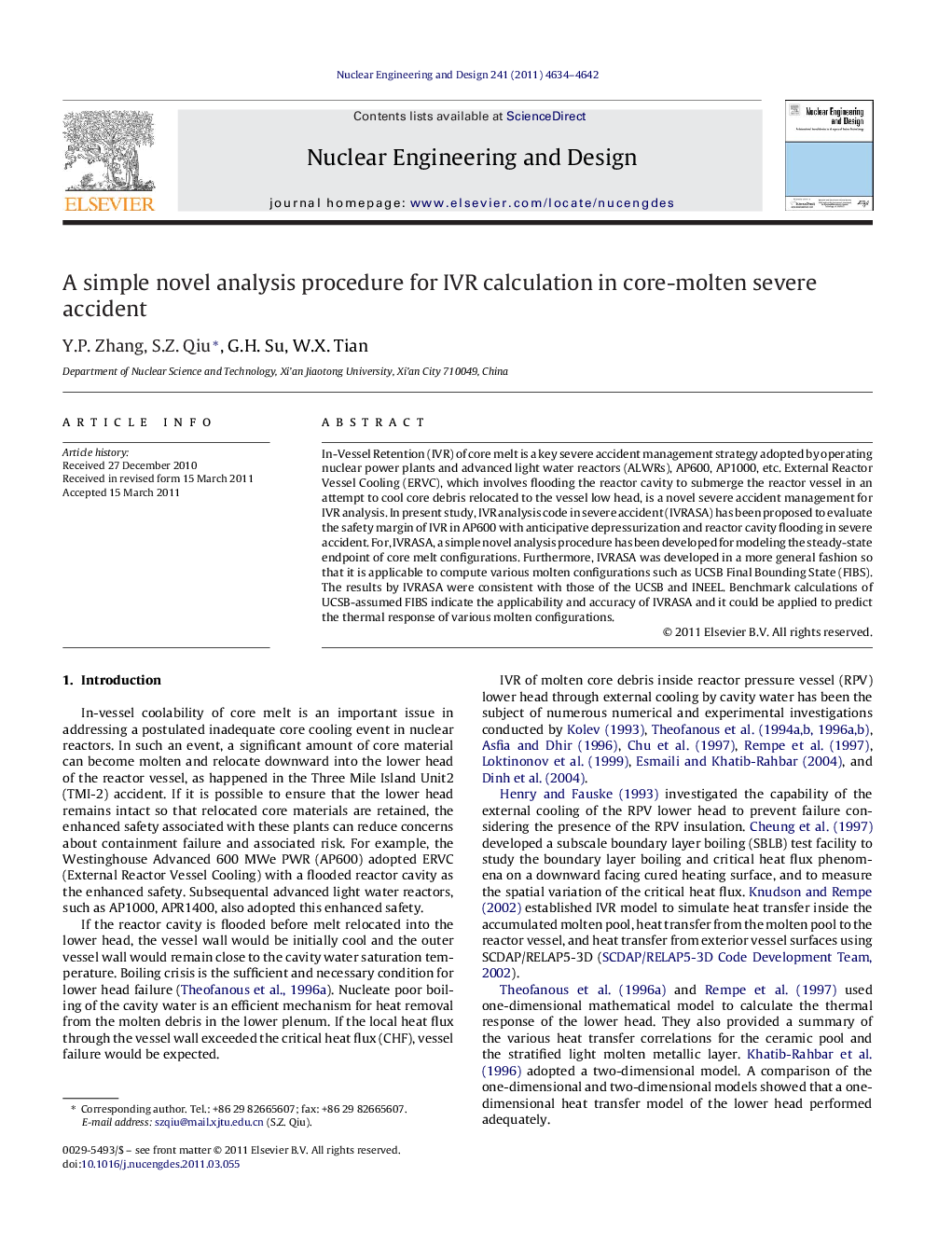| کد مقاله | کد نشریه | سال انتشار | مقاله انگلیسی | نسخه تمام متن |
|---|---|---|---|---|
| 297569 | 511762 | 2011 | 9 صفحه PDF | دانلود رایگان |

In-Vessel Retention (IVR) of core melt is a key severe accident management strategy adopted by operating nuclear power plants and advanced light water reactors (ALWRs), AP600, AP1000, etc. External Reactor Vessel Cooling (ERVC), which involves flooding the reactor cavity to submerge the reactor vessel in an attempt to cool core debris relocated to the vessel low head, is a novel severe accident management for IVR analysis. In present study, IVR analysis code in severe accident (IVRASA) has been proposed to evaluate the safety margin of IVR in AP600 with anticipative depressurization and reactor cavity flooding in severe accident. For, IVRASA, a simple novel analysis procedure has been developed for modeling the steady-state endpoint of core melt configurations. Furthermore, IVRASA was developed in a more general fashion so that it is applicable to compute various molten configurations such as UCSB Final Bounding State (FIBS). The results by IVRASA were consistent with those of the UCSB and INEEL. Benchmark calculations of UCSB-assumed FIBS indicate the applicability and accuracy of IVRASA and it could be applied to predict the thermal response of various molten configurations.
Journal: Nuclear Engineering and Design - Volume 241, Issue 12, December 2011, Pages 4634–4642